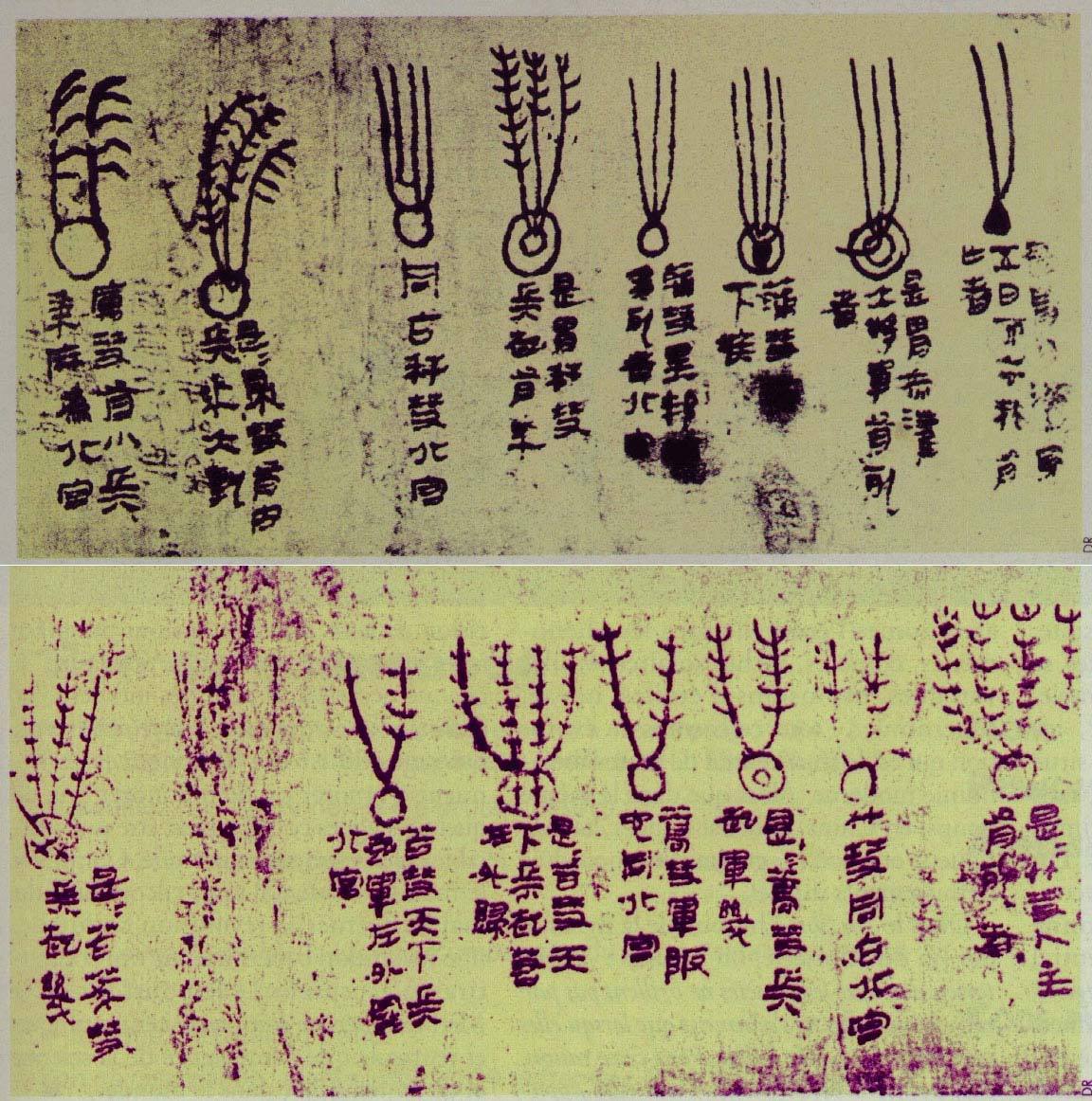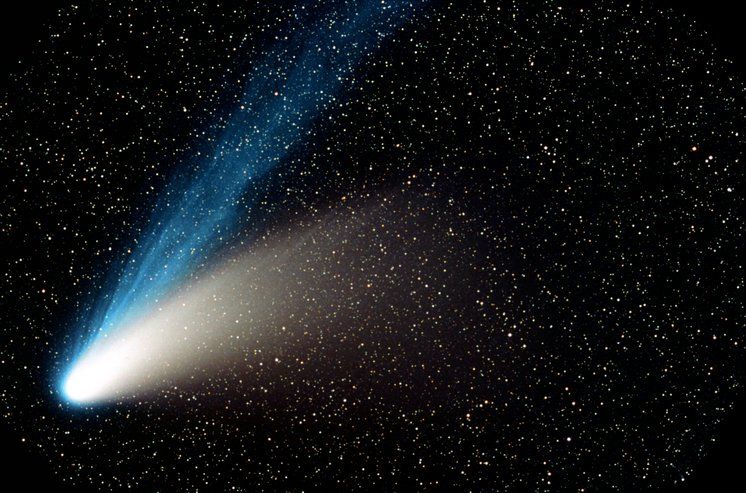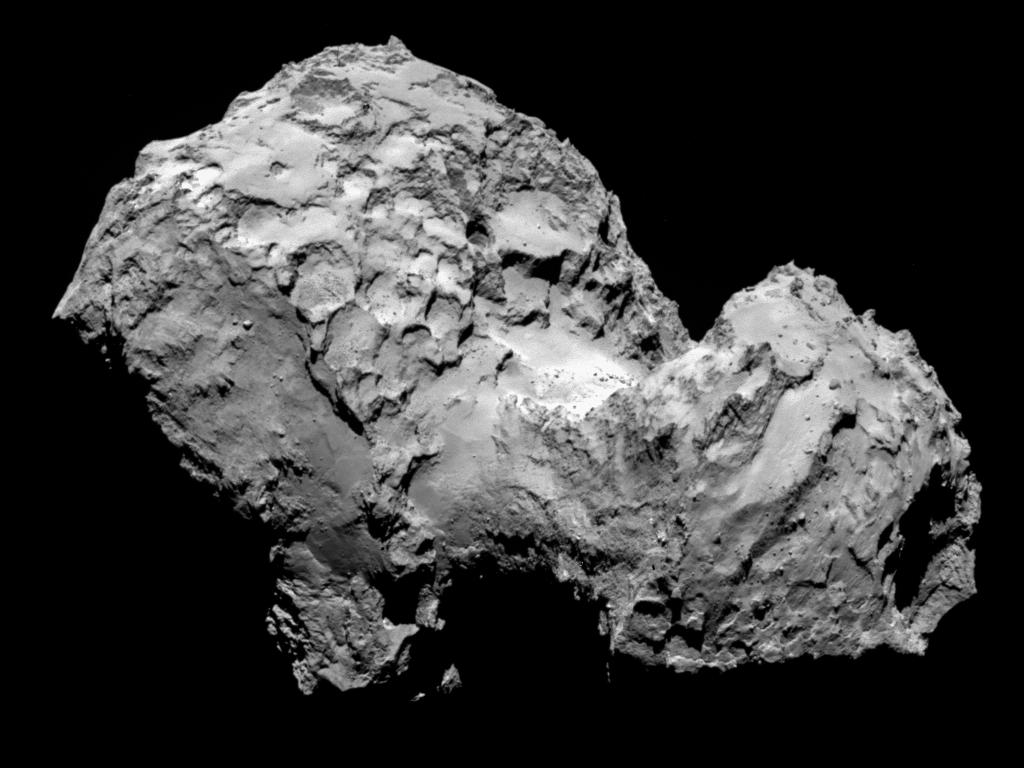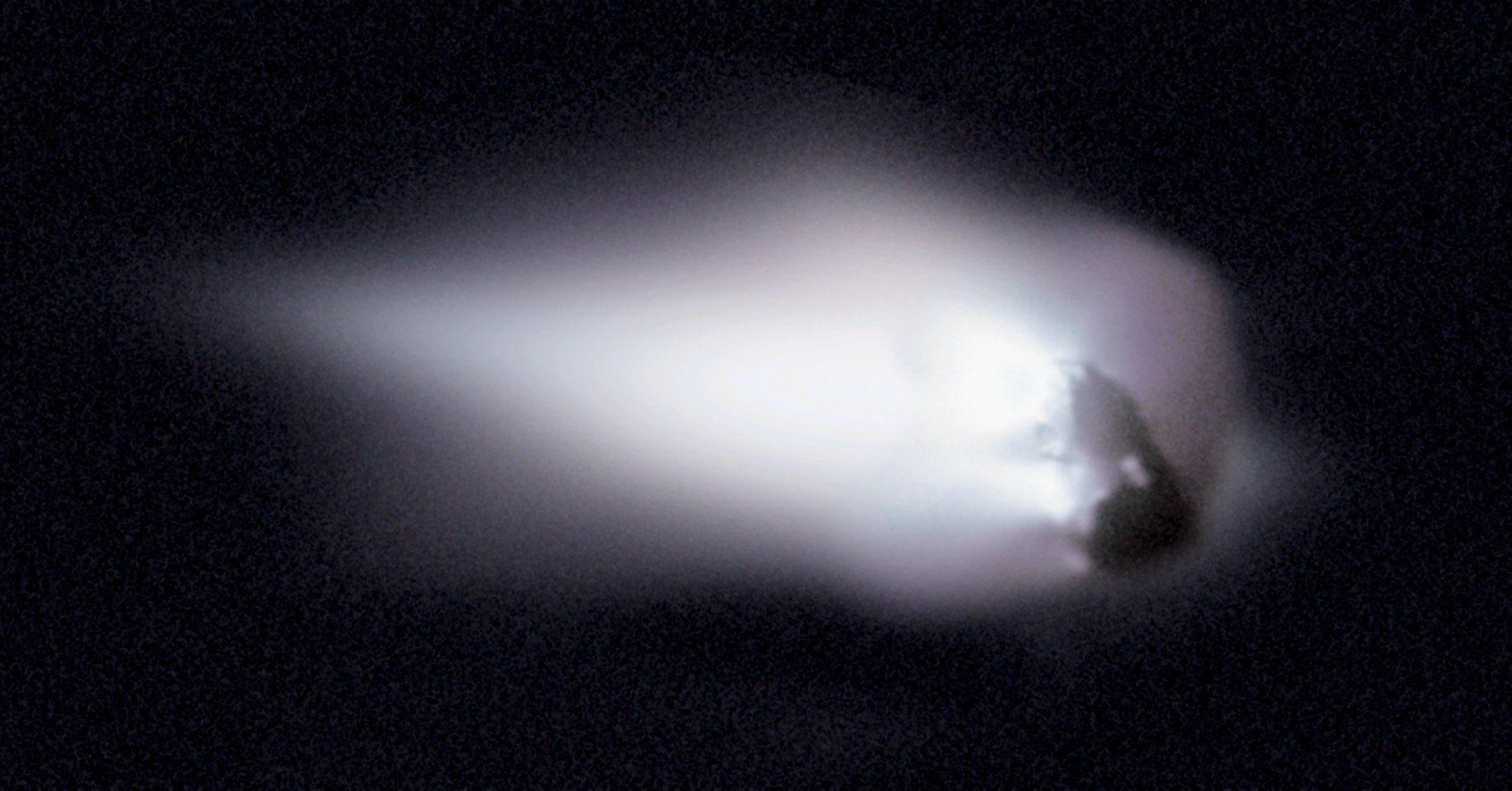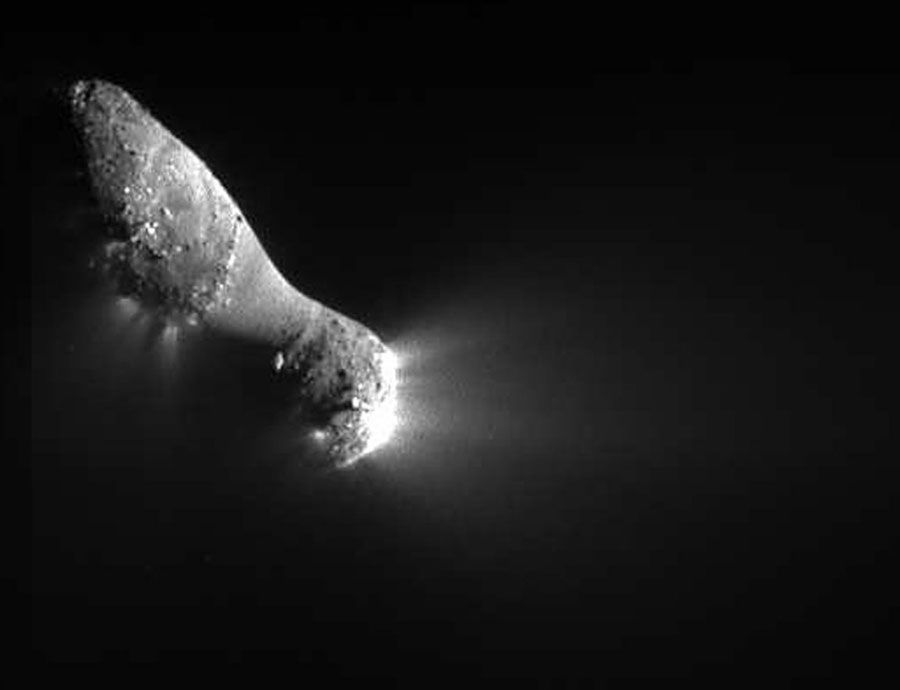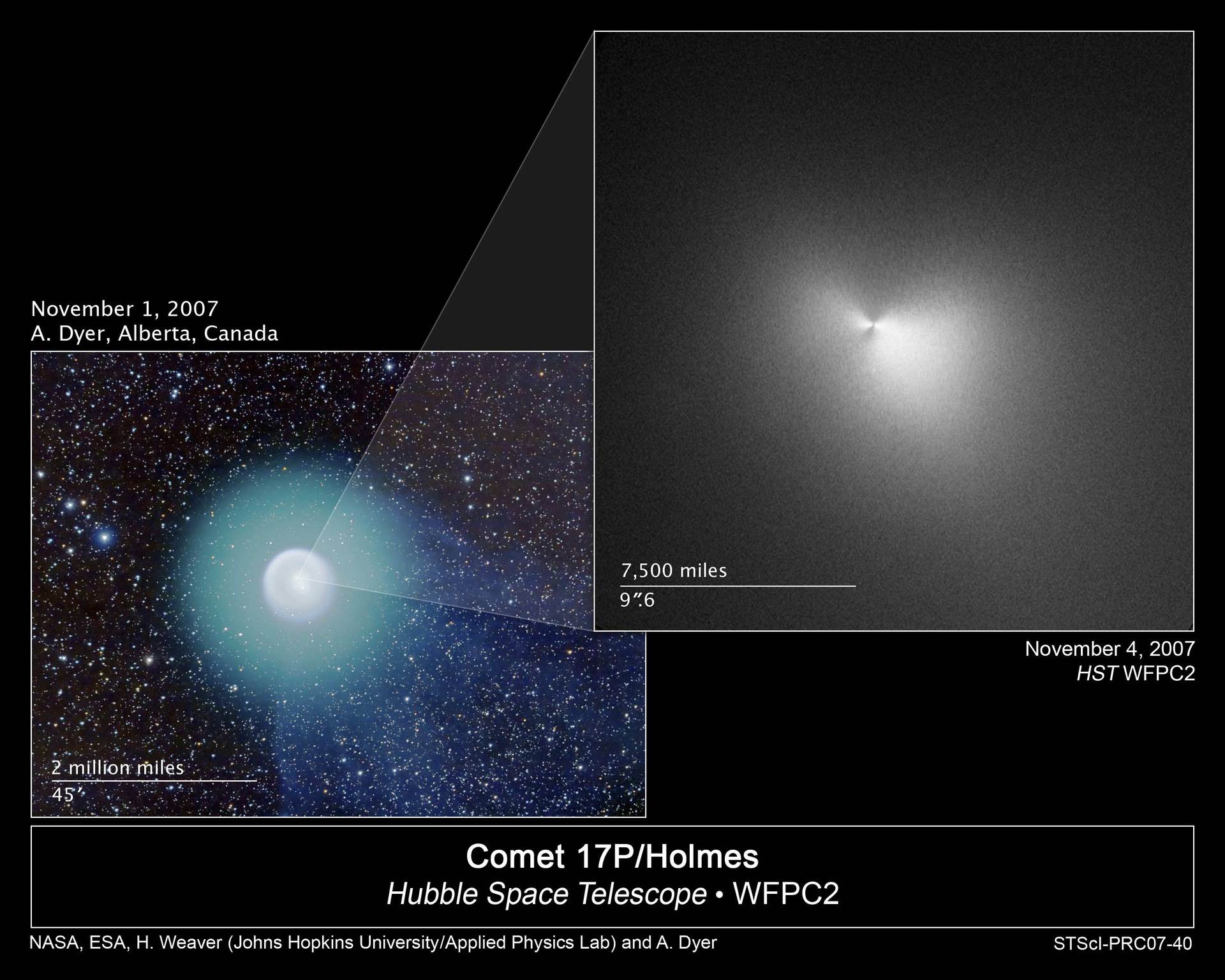This web page is created within BALTICS project funded from the European Union’s Horizon2020 Research and Innovation Programme under grant agreement No.692257.
Comets — classification, structure, origin
Comets, or so-called tailed stars, are among the most beautiful objects that have captured people’s attention since ancient times. Evidence of comets, often referred to as harbingers of doom, can be found in the historical records of many nations.
The astronomers of Ancient China have carefully documented comet visits, noting times of cometary appearances, celestial positions and illustrating them. This information is a valuable resource nowadays, allowing us to trace the passage of individual comets over the past centuries.
Nowadays, we know that comets are objects that have been preserved since the dawn of the Solar System when some of the gases in the nebula condensed and coalesced, forming irregularly shaped objects. Studying them allows us to better understand the conditions that prevailed in the cloud of dust and gas that gave birth to the Sun and the planets orbiting it.
Our understanding of the structure of comets has changed over time. In the late 1700s, Immanuel Kant reasoned that comets are made up of volatile substances. In 1950, Fred Whipple hypothesised that comets are not hard rock objects containing ice, but icy objects containing dust and hard rock. He called comets “dirty snowballs”. This term is still popular nowadays.
Each comet has a nucleus, which varies in diameter from a few kilometres to tens of kilometres. It is usually an irregularly shaped object made up of gases frozen in ice, i.e. water, a small amount of dust and hard rock. Recent studies indicate that comets also contain organic molecules of varying complexity. Therefore, comets can be considered as a possible initial source of the molecules needed for life to form. The nucleus is usually covered by a layer of dust of varying thickness, so the nucleus appears dark in photographs.
As the comet approaches the Sun, the ice begins to melt and gases escape into space, forming the coma or comet’s atmosphere. It can extend hundreds of thousands of kilometres away from the comet’s nucleus. It is basically made up of water molecules and dust.
As the solar wind blows, a comet tail can form, even several. There is a dust tail and an ion tail of a comet.
The dust tail is made of dust that remains in the orbit of a comet as the gas flows away from the comet. It is illuminated by sunlight. The dust tail is clearly visible and is mostly slightly curved. It has a characteristic pale yellow colour. It can be millions of kilometres long.
The ion or gas tail is made up of charged gas particles or ions flowing away from the comet. Since ions are charged and much lighter than dust, they are blown by the solar wind.
The ion tail is always pointing away from the Sun. Accordingly, if a comet is approaching the Sun, the ion tail will follow behind, but if the comet is travelling away from the Sun, the ion tail will be in front of the comet. If a strong solar wind blows, the ion tail may detach, but after a few days, a new tail will be formed.
Comets, like all other objects in the Solar System, orbit the Sun. They have elongated elliptical or parabolic orbits, mostly at different angles to the ecliptic plane. This is particularly characteristic of long-period comets, which have originated in the Oort cloud.
Some of the famous comets observed in earlier centuries are so-called short-period comets with orbital periods of less than 200 years. Some of these comets reside in the Kuiper Belt.
More unpredictable are the long-period comets, which reside in the Oort cloud, about 100,000 astronomical units from the Sun. Their orbital period can be not just a few hundred years but a few thousand or even millions of years. Most comets of this type are observed only once.
There is also a third group of comets, the hyperbolic comets or those that visit the centre of the Solar System only once. They fly out of the Solar System without returning.
Comets usually travel a great and safe distance from the Sun. When analysing the photographs of the corona or immediate surroundings, sometimes, comets that fly dangerously close to the Sun are revealed. Often they crash into the Sun or are torn to pieces, ending their existence.
If the orbit of the comet’s tail crosses or is close to the Earth’s orbit, dust left by the comet will enter the Earth’s atmosphere at certain times. It leaves bright streaks of light in the atmosphere called a meteor, known colloquially as a “falling star”.
Most of the known meteor streams observed on Earth during the course of a year have a comet that has left behind this dust.
Since comets mostly contain water ice, one quite popular hypothesis is that comets are objects that brought water to Earth shortly after our planet had formed and cooled down. However, existing cometary studies do not fit this hypothesis because the water on the comets tested so far does not resemble that found in Earth’s oceans. Of course, it should be noted that the number of comets that have been well studied so far is extremely small.
Comets are named after their discoverer or discoverers, for example, the Shoemaker-Levy, Churyumov-Gerasimenko comet. Nowadays, comets are increasingly being discovered as part of various automated missions and projects. The name of the comet usually includes the name of the mission or project.
